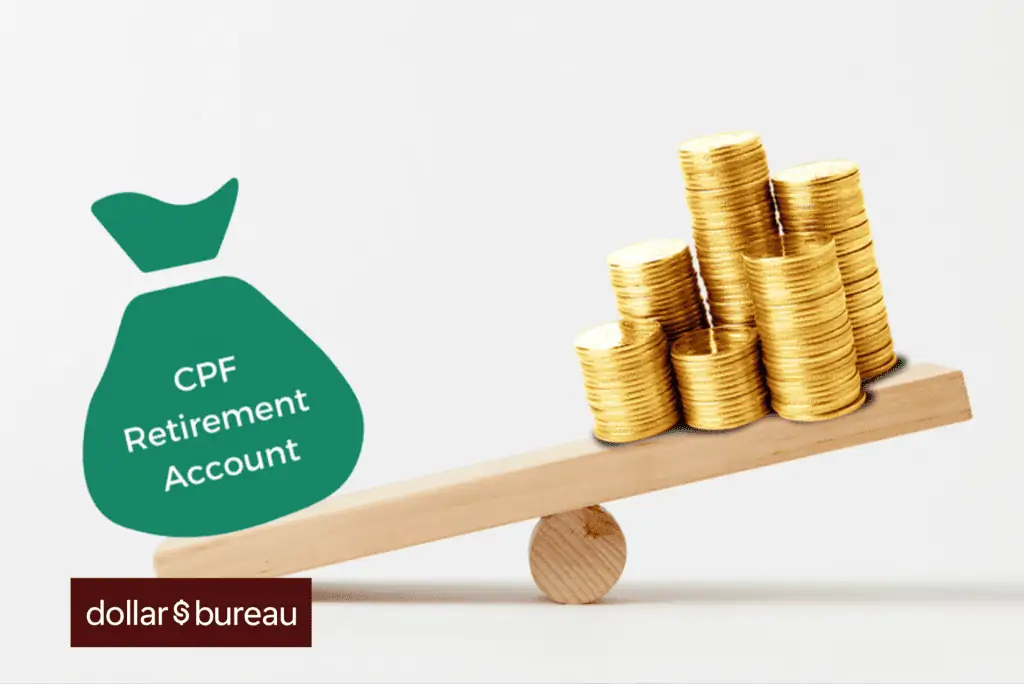Retirement is one of those phases in life that everyone typically looks forward to and will reach some point in their golden years.
And in Singapore, the CPF Board helps you in this journey through an account especially dedicated for this purpose – which is also known as the Retirement Account (RA).
Thus, it’s important that you know the ins and outs of your CPF RA so that you can fully utilise it for smooth retirement planning.
What is the CPF Retirement Account (RA)?
As the name suggests, the RA is meant to supplement your retirement needs by providing you with earned interest, payouts from the Retirement Sum Scheme (RSS), as well as CPF LIFE monthly payouts from your payout eligibility age (age 65).
The CPF LIFE plan is an annuity plan that provides recurring passive income for as long as you live. Savings in your RA will be used for this plan.
Whereas for the RSS, you will only receive monthly payouts until you’re age 90 or until your savings run out (whichever is earlier).
Moreover, these monthly payouts are dependent on how much you have in your RA, up to a Basic Retirement Sum (BRS), a Full Retirement Sum (FRS), or an Enhanced Retirement Sum (ERS), and the CPF LIFE plan you are on.
If you’d like to know more about the various CPF Life plans or other tips on retirement planning, we have a comprehensive guide laid out for you here.
According to the CPF Board, the BRS, FRS and ERS as of 2022 are
| Retirement Sum | Amount |
| Basic Retirement Sum (BRS) | $96,000 |
| Full Retirement Sum (FRS) | $192,000 |
| Enhanced Retirement Sum (ERS) | $288,000 |
Take note that the FRS and ERS are twice and thrice of the BRS correspondingly.
Also, the BRS will also be raised by 3.5% per year for the next 5 cohorts of CPF members turning 55 from 2023 to 2027.
Thus, it would be $99,400 in 2023, $102,900 in 2024, $106,500 in 2025, $110,200 in 2026, and $114,100 in 2027.
How is your CPF RA created?
Your CPF RA is created by combining the sum of your CPF Special Account and Ordinary Accounts (SA and OA)* up to the BRS or FRS – that is if the combined balance of both accounts reaches > $5,000.
*The RA takes the savings from your SA first, followed by your OA.
A few months before your 55th birthday, you should receive a letter from the CPF Board providing you with more information about your CPF RA, which is automatically created when you reach age 55.
This letter will also provide details on how you can make an appointment to attend the CPF Retirement Planning Service (CRPS), a one-to-one session that uses your personalised information to explain more about CPF for members turning age 55.
What is the minimum sum for your CPF Retirement Account?
The minimum sum for your CPF RA will be the prevailing BRS of $96,000 as of 2022. This amount will also be reviewed annually to keep up with inflation.
Based on historical trends, the minimum sum for your CPF Retirement Accounts increases by 3%-3.5% per annum.
CPF RA Interest Rate
As of now until 31 December 2022, the floor interest rate for your RA is at 4% per annum (p.a.). This rate will be reviewed annually.
What’s better is that besides the 4% interest p.a that you’re getting from your CPF RA, you will get:
- an extra 2% interest p.a on the first $30,000 and,
- an 1% extra interest p.a on the next $30,000
all while the rest of your savings continue to earn their base interests!
Is there a maximum sum for your CPF Retirement Account?
The maximum amount you can have in your CPF RA is up to the prevailing ERS of $288,000 as of 2022.
However, keep in mind that this ERS increases every year – so you can always top up if you have not reached the ERS in the following year.
What happens if I don’t meet the minimum sums for CPF RA?
If you don’t meet the minimum sums for your RA, this may affect your retirement payouts and withdrawal limits when you turn 55.
Let me present this in 2 scenarios.
- For those who have ≤ $5,000 in their RA
Essentially, you would not even have a Retirement Account because CPF is unable to create one for you.
Thus, you’ll be able to withdraw the entire amount upon age 55, but you would not receive ANY retirement payouts whatsoever.
- For those who have > $5,000, but < $96,000 (BRS)
You are allowed a withdrawal limit of only $5,000 and will only receive your retirement payouts when you’re age 65.
What can I use the CPF Retirement Account for?
As you can probably guess, your RA is essentially used to receive CPF LIFE payouts depending on the amount of money you have inside.
Besides these payouts, you are able to tap onto your RA for property purposes subject to 2 conditions such as (1) the date to which you purchase your property or (2) the age of your property relative to your age.
Let’s consider these 2 conditions:
- If you had purchased your property before 10 May 2019
Provided that you have > $96,000 (BRS) in your RA, you will be able to use the excess savings minus your BRS to pay for your property mortgage if needed.
- If you had purchased your property after 10 May 2019
The same condition applies, but the remaining lease of your property must cover you until you’re 95 years old.
Or else, you can’t use your RA savings to pay for any property needs.
Can I top up my CPF Retirement Account?
Yes, you can! In fact, you’re even encouraged to.
If your RA has yet to meet the current BRS/FRS/ERS, you should consider making cash top-ups to enjoy higher CPF LIFE payouts and tax reliefs.
You can also benefit from a Matched Retirement Savings Scheme (MRSS) for your cash top-ups if you’re eligible.
Matched Retirement Savings Scheme (MRSS)
Cash top-ups will also be matched up dollar-by-dollar from the Government (of up to $600 a year) if you are eligible for MRSS.
First launched in 2021, this scheme will run for 5 years (until 2026) and will amount to a maximum of $3,000 over this period.
You will be assessed every year whether you’re eligible for MRSS based on all these criteria:
- You must be a Singapore citizen
- You are of age 55 to 70 as of 31st December of the assessment year
- Savings in your RA < current BRS ($96,000 as of 2022)
- Your average monthly income is < $4,000
- Your annual value of residence is not < $13,000
- You must not own more than one property
If you’re eligible for MRSS, you will be notified by the first quarter of every year by CPF, leaving no need for a separate application.
Once you have made a successful cash top-up, the MRSS for that given year will be automatically credited into your RA by the first quarter of the following year.
Top-Up Limits
General top-ups will fall into the Retirement Sum Topping-Up Scheme (RSTU) and have limits depending on your age.
| For those below age 55 | For those above age 55 |
The current FRS ($192,000) less the sum of your
|
The current ERS ($288,000) less your
|
How to Top Up CPF RA?
According to CPF Board, you can receive or top-up for yourself or your loved ones’ RA using these options:
- Cash or,
- CPF Transfer (from your OA) or,
- Both!
| Top-ups by Cash | Top-ups by CPF Transfer | |
| CPF Mobile Application |
|
|
| CPF Website |
|
|
Do keep in mind that when you transfer your CPF savings from your OA to either your SA or RA – this process is irreversible.
Doing so also brings about some implications such as the inability to use your OA for housing, education, or investment purposes if the need arises.
But of course, there is the advantage of growing your retirement capital and leveraging on interest! It all boils down to what you view as a priority and what your needs are.
So, think wisely before you make any decision!
Tax Reliefs
By topping up your RA to within the current FRS, you can enjoy an annual tax relief of up to $8,000.
On a side note, you can also top up your loved ones’ CPF RA to receive additional tax relief of $8,000.
However, these top-ups have to be made before 31 December every year for the tax reliefs to be eligible for the following year’s tax assessment.
Conclusion
As you can see, the CPF Retirement Account is an integral part of your retirement journey for apparent reasons.
Not only does it provide you with stable monthly payouts from CPF LIFE, but it also provides you with a passive income that will definitely set the right path towards a financially-stable retirement.
It’s certainly never too late to start being educated about retirement, as the key is to plan early for a smoother journey.
If you’ve found this helpful, share this article with your peers or even those who are approaching the retirement age – it’s bound to happen anyways!
Need help planning for retirement?
We partner with MAS-licensed financial advisors to help you with this.










